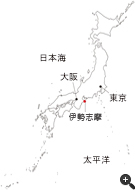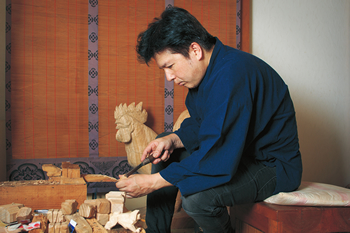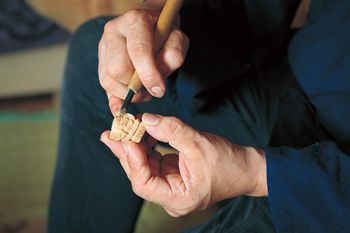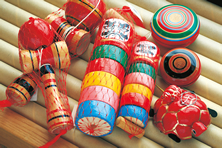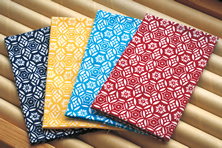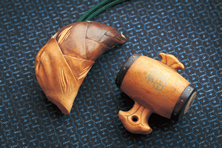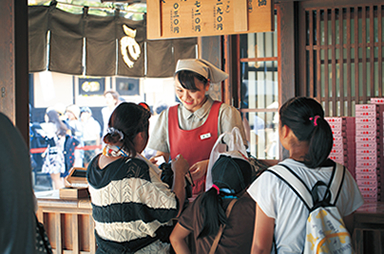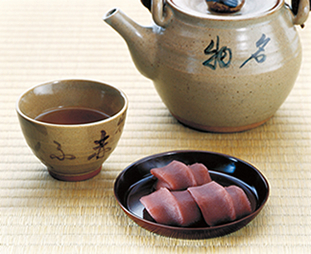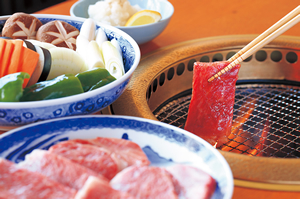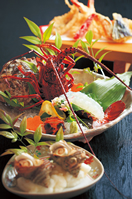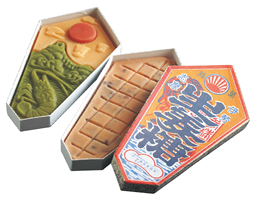niponica is a web magazine that introduces modern Japan to people all over the world.
2015 No.17
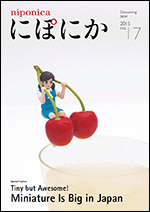
To read the e-book you need to have JavaScript enabled in your browser and a free Flash Player plug-in from Adobe Systems Inc. installed.
 Strolling Japan
Strolling Japan
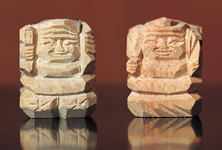
Ise itto-bori carvings are said to have started with shrine carpenters. The job is done quickly without stopping, taking care to be guided by the natural grain of the wood.
Close to the Inner Shrine is a district called Oharai-machi, which has thrived since ancient times thanks to its location near a major pilgrimage center. Here you will find souvenir shops and eating and drinking establishments. The most sought-after treats are anko-mochi rice cakes topped with a sweet bean paste made by a traditional confectionary established in 1707. In the middle of the district lies Okage-yokocho, a town constructed in the ancient style to keep alive Ise’s history and old ways of life. It was built in 1993 at the time of the Shikinen Sengu ceremony. Crowds flock to the streets and shops all day.
The shops offer a wide selection of souvenirs inspired by traditions developed over centuries of pilgrimages. Fine souvenirs include handcrafts such as Ise gangu toys, manufactured here since ancient times, Ise netsuke toggles for cords used to suspend small objects, and Ise katagami pattern paper featuring dyed designs and motifs. One special kind of souvenir is Ise itto-bori, which are sculpted with a single knife and come in shapes such as animals and charms connected in some way to the shrine. This craft is said to have started when shrine carpenters began carving left-over pieces of wood after they constructed the sacred buildings. The small rustic sculptures, with their straight lines and roughly hewn surfaces, have an endearing nature that warms people’s hearts.
Moreover, the Ise-Shima district offers fine food from the sea, the most tempting surely being the local specialty, Ise ebi (Japanese spiny lobster). Its bright red color and its long “whiskers,” symbolizing long life, make it a favorite on festive occasions. Preparation styles vary from sashimi raw to grilled whole. The area is also known for its beef from a Japanese breed of cattle. When grilled with vegetables on a wire mesh, it is tender and satisfying.
Blessed with a magnificent natural environment, Ise-Shima is also ready to charm you with decorative crafts rooted in ancient traditions.
Kishikawa Yukiteru has been carving Ise itto-bori for 36 years. In just 20 minutes he finished this pair of Ebisu Daikoku carvings, using a number of different knives. (Height: 3 cm; see photo above).
Shopping at Kamiji-ya and other shops in Okage-yokocho for traditional crafts can be plenty of fun.
1.Ise gangu toys are known for their cheerful colors. They have been made here for souvenir hunters for centuries.
2.Hand towels dyed using Ise katagami pattern paper.
3.These two netsuke toggles represent a takenoko bamboo shoot and a takara-tsuchi good luck mallet. Another example of Japan’s finely detailed handcraft traditions, they are carved from Japanese box tree wood, which is particularly hard and is known at Ise as “precious stone wood.”
Akafuku mochi rice cakes are covered with an bean paste and shaped like the ripples of the Isuzu River flowing nearby. Akafuku mochi is always a popular souvenir. While at the shop, you might like to have one with a cup of tea.
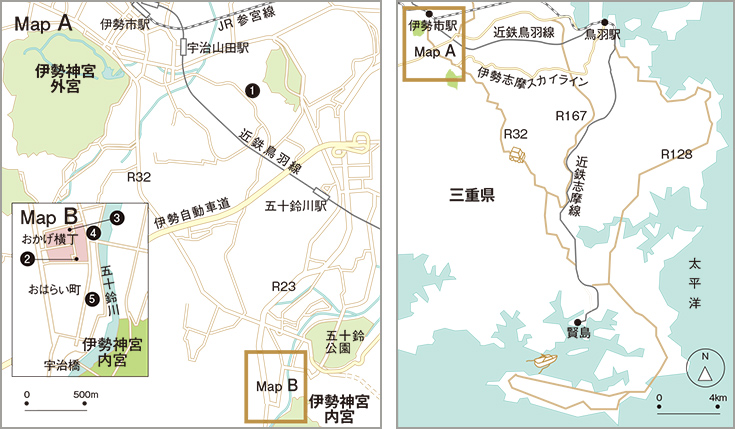
Ise-Shima Area Maps
●Getting there
From Tokyo Station, take a JR Tokaido Shinkansen train to Nagoya Station. From there, take the JR line or Kintetsu line to either Iseshi Station or Ujiyamada Station (about 90 minutes).
●For more info
Ise Jingu Shrine
http://www.isejingu.or.jp/foreign/index.html (Chinese, English, Japanese and Korean)
Ise Traditional Crafts Preservation Association
http://www.ise-dentoukougei.com/ (Japanese-language website)
Okage-yokocho
http://www.okageyokocho.co.jp/ (Japanese-language website)
(1)Yamatoan Kuroishi
http://kuroisi.com/ (Japanese-language website)
(2)Butasute
http://www.butasute.co.jp/restran/okage/index.html (Japanese-language website)
(3)Kamiji-ya
http://www.okageyokocho.co.jp/tenpo.php?no=44 (Japanese-language website)
(4)Akafuku
http://www.akafuku.co.jp/global/english/ (English and Japanese)
(5)Kumihimo Hirai
http://www.dento.gr.jp/hirai/index2.html (English and Japanese)




